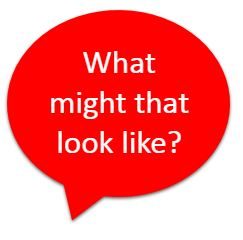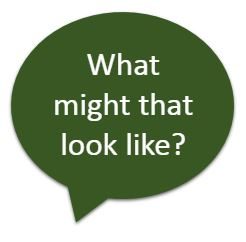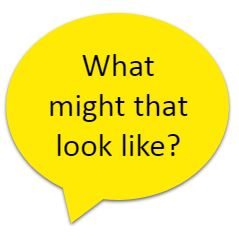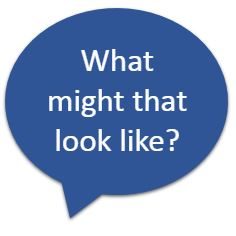| FIRST LEVEL | TECHNOLOGIES | |
| Experiences and Outcomes | Benchmarks | |
| Organiser – Computing Science | • Follows sequences of instructions/algorithms from everyday situations for example, recipes or directions, including those with selection and repetition.
• Identifies steps in a process and describes precisely the effect of each step. • Makes decisions based on logical thinking including IF, AND, OR and NOT for example, collecting balls in the gym hall but NOT basketballs, line up if you are left-handed OR have green eyes. • Collects, groups and orders information in a logical, organised way using my own and others’ criteria (MNU 1-20a and b). |
|
|---|---|---|
| Understanding the world through computational thinking | ||
| I can explore and comment on processes in the world around me making use of core computational thinking concepts and can organise information in a logical way
TCH 1-13a Links to: Numeracy & Maths – Number, Money, Measure – Patterns & Relationships MTH 1-13a & b, Information Handling – Data & Analysis MNU 1-20a & b, MTH 1-21a
|
||
 |
Progression |
|
| For a range of purposes across my learning I can/am able to | For a range of purposes across my learning I can/am able to | For a range of purposes across my learning I can/am able to |
| With support, begin to recognise & follow individual steps within sequences of instructions for everyday tasks or processes e.g. how to make a jam sandwich. | Begin to independently recognise & follow individual steps within sequences of instructions for everyday tasks or processes. | Follow & create individual steps within sequences of instructions (algorithms) including those where steps are repeated e.g. recipes, directions. |
|
When learning about Analysing and Creating Instructions learners might: * Analyse a set of instructions that are deliberately wrong, such as how to get to the library, and can identify the points that are wrong and then correct these steps to make an accurate route and is there more than one route or method? The route from primary 1 to the gym hall is probably different from primary 5 classroom? * Analyse a set of given instructions for a bee bot, or directions for a partner, and predict the end result – will the beebot arrive at the correct location? * Investigate patterns and instructions in well-known songs, such as Ten Green Bottles or the Hokey Cokey, and predict the next verse or progression – what comes after the right hand in-out? |
||
|---|---|---|
| Begin to identify & record individual steps within everyday processes e.g. using pictures/text, simple flow diagrams, written instructions. | With support, say what the purpose or effect of each step in a process is.
Begin to notice & talk about how some processes involve repeating the same steps e.g. following directions for a task |
Say what the purpose or effect of each step in a process is. |
|
When learning about Analysing and Creating Instructions learners might: * Write a list of logical instructions (algorithms) around daily routines, such as making toast, or explaining how they completed an experiment/process in Functional Writing. There are many ‘unplugged’ resources like this on Barefoot.com” |
||
| With support, begin to make logical decisions in response to real-life situations e.g. IF you have money for the tuck shop, line up here. IF you don’t please sit down. | Begin to understand that an IF statement is used to make a decision or SELECTION.
Begin to understand that some decisions require more than one piece of information to be completed correctly e.g. you can take part in Physical Education IF you have shorts AND gym shoes |
Make use of logical thinking concepts for real life tasks by combining SELECTION (IF) with multiple conditions (AND, OR & NOT) e.g. IF you are having a school dinner please stand up, but NOT IF you are a blue OR green band. |
|
“When learning about Computational Thinking learners might: * Work logically to find errors in Numeracy & Maths problems * Use their emerging computing science knowledge, especially decomposition and sequencing, to develop their understanding of mathematical processes, such as multiplying two-digit numbers or explaining next step in patterns and sequences, for example: “the biggest number goes on top, then you start with the units and take the bottom one away from the top one and put the answer under the line and then move onto the tens and do the same thing.” * Play coding games, such as those at Code.org, which offer great problem-solving exercises around direction, angles, pattern and logic * Make decisions based on logical thinking, for example, such as “Collect balls in the gym hall but NOT basketballs” or “Line up if you are left-handed OR have green eyes.” * Explore Barefoot Unplugged resources where they need to write, draw or talk their way through problems in logical steps and collaborate with peers to solve a range of problems with the emphasis on working for accuracy instead of ‘rushing to finish’” |
||
| Explore & develop my ability to group & organise objects & information in a range of logical ways i.e. broadening my ability to make logical choices. | Use my own & others’ criteria to collect & organise information in logical ways e.g. tree or branching diagram. | Organise information in logical ways using my own & others’ criteria in a range of contexts & talk about how to organise e.g. noticing & showing that there are different ways to classify the same objects. |
|
“When learning about Sorting and Ordering Information and Data learners might: * Collect and organise information on different plants or animals to create a Top Trumps-style game where they collect and organise data from class surveys about favourite things like fruit, films or books and then use this data to inform decisions in the school, for example: “Oranges are the favourite fruit in the class, we can make sure there are oranges in the lunch hall.” * Explain to the learners that they are surveying that theydon’t have to participate in the survey and that all data will be kept in their jotters and only used for the purpose of the exercise. If data is going to be captured digitally, it should be explained that this will be deleted when no longer needed” |
||
|
|
||
|
|
||
|
|
||
|
|
||
 From Education Scotland National Improvement Hub “What digital learning might look like”:
From Education Scotland National Improvement Hub “What digital learning might look like”: From Education Scotland National Improvement Hub “What digital learning might look like”:
From Education Scotland National Improvement Hub “What digital learning might look like”: From Education Scotland National Improvement Hub “What digital learning might look like”:
From Education Scotland National Improvement Hub “What digital learning might look like”: From Education Scotland National Improvement Hub “What digital learning might look like”:
From Education Scotland National Improvement Hub “What digital learning might look like”: